by Lisa Cooke | Sep 25, 2015 | 01 What's New, Ancestry, British, Census, FamilySearch, Findmypast, images, Irish, Italian, Records & databases, School Records, United States
Every week we blog about new genealogy records online. Which ones might help you find your family history? New this week: more Italian civil registrations, Ohio and Pennsylvania marriage records, thousands of New York genealogical resources, Illinois state censuses and school records for England, Wales, Ireland and Australia.

SCHOOL RECORDS. Nearly 2.9 million School Admission Register records from England and Wales, Ireland and NSW, Australia are now searchable on Findmypast. Record content varies, but according to Findmypast, “These fascinating new records can allow you a glimpse into your ancestors’ early life, pinpoint the area they grew up in, reveal if they had a perfect attendance or occasionally played truant and can even determine whether they worked in a school as an adult.”
ILLINOIS STATE CENSUSES. Ancestry has updated its collection of Illinois state censuses, which now include 1825, 1835, 1845, 1855 and 1865, along with 1865 agricultural schedules for several counties and nonpopulation schedules of the federal censuses for 1850-1880. (Learn more about U.S. state censuses here.)
ITALY CIVIL REGISTRATIONS. FamilySearch continues to upload Italy’s civil registration records. This week, they added browse-only records (not yet indexed) for Potenza, Rieti and Trapani.
NEW YORK GENEALOGY MATERIAL. Thousands of pages of materials from the New York Genealogical and Biographical Society are now searchable on Findmypast. Among these are all back issues of the NYG&B Record, the second-oldest genealogical journal in the U.S. (in print since 1870). Findmypast’s Joshua Taylor calls it “the single most important scholarly resource that exists for people researching New York families.” Other collections include unique census fragments, vital records abstracts, baptismal registers and old diaries. Click here to see and search the full list.
OHIO MARRIAGES. More than a quarter million indexed records and thousands of images have been added to FamilySearch’s collection of Ohio marriage records for 1789-2013.
PENNSYLVANIA MARRIAGES. Over a million digitized images of Pennsylvania civil marriage records (1677-1950) are now free to browse at FamilySearch. The collection description says it’s an “index and images of various city and county marriage records, many from Philadelphia.”
 Did you find anything worth sharing here? Please do! We love getting the word out about new genealogy records online.
Did you find anything worth sharing here? Please do! We love getting the word out about new genealogy records online.
by Lisa Cooke | Feb 17, 2020 | 01 What's New, Records & databases
There are a wide range of genealogical records newly available online. Here are new and updated collections as of this week. We’ve included important information about each collection that will help you determine whether it is suitable for your genealogical research. We include affiliate links for which we may be compensated, at no expense to you. Thank you for supporting free article like this by using our links.
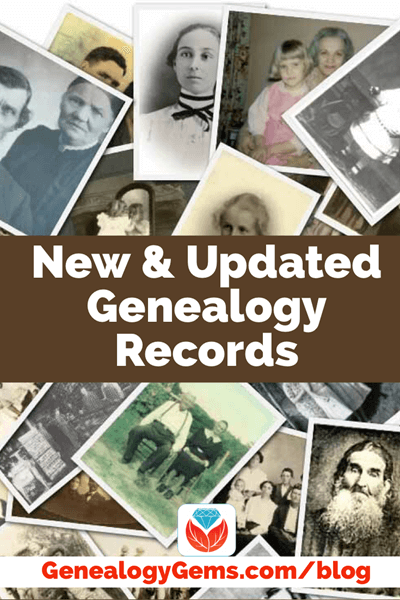
The latest genealogy records from Genealogy Gems.
NEW: HALL COUNTY NEBRASKA NEWSPAPER DIGITIZATION PROJECT
About the collection:
“The Hall County Newspaper Digitization Project is a collaborative project supported by the historical and genealogical societies, newspapers, public libraries, and museums in Hall County. This project will digitize the 28 historic newspapers published in Hall County since 1870. The Grand Island Independent (up to 1924) is included in this project.”
Newspapers included in the first completed phase of digitization include:
- Platte Valley Independent (1870-1884);
- Grand Island Times (1873-1892);
- Grand Island Independent (1884-1900);
- Wood River Gazette (1884-1892);
- Doniphan Eagle (1892-1895);
- Staats-Anzeiger und Herald (1894-1918);
- Wood River Interests (1894-1919);
- Wood River Sunbeam (1906-2003).
Search the collection here.
DIGITAL LIBRARY OF GEORGIA
Sanborn Fire Insurance Maps (Select Georgia towns and cities. 1923-1941)
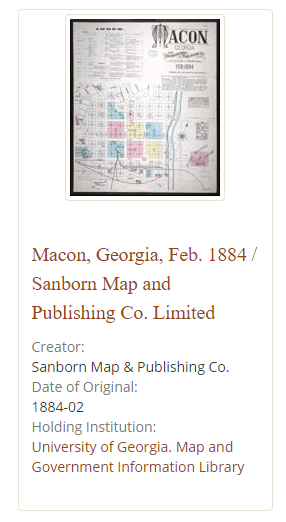
Sanborn Fire Insurance Maps at the Digital Library of Georgia
About the collection:
“The Digital Library of Georgia has just made Sanborn fire insurance maps produced between 1923-1941 for 39 Georgia towns and cities in 35 counties freely available online. The maps, which are now in the public domain, can be retrieved at dlg.usg.edu/collection/dlg_sanb, and complement the DLG’s existing collection of the University of Georgia Map and Government Information Library’s 539 Sanborn maps dating from 1884-1922 that have been available since 2005. The DLG has also upgraded its image viewer, which will allow better access and improved navigation to the new and older Sanborn images from this collection.”
Search the collection here.
MYHERITAGE
Search the following collections here at MyHeritage.
NEW: New York, Birth Index, 1881-1942
About the collection:
“This collection consists of indexes of births from the state of New York between the years 1881 and 1942. The State of New York began statewide registration of births in 1881, supervised by the local board of health. A record may include the following information when it is available: given name and surname, birth date, town of birth, and gender. The images in this collection have been obtained through the outstanding work and efforts of Reclaim the Records.
This index does not contain lists of births from New York City. New York City is considered to be a separate vital records jurisdiction from the rest of New York state, and consequently the city has its own birth indices. However, a small number of New York City birth listings are found throughout this index. This is due to the births happening in towns that were previously independent before the consolidation of the city in 1898 (for example, a pre-1898 birth in a place like Canarsie [Brooklyn] or Flushing [Queens] might be listed here) or because there was a late birth registration.”
NEW: Minnesota, Death Index, 1904-2001
About this collection:
“This collection includes an index of death records from Minnesota, between 1904-2001. Information may include the deceased name, date of death, county of death, date of birth, county of birth and certificate number. It may also include the mother’s maiden name when available.
Information for the years 1908-2001 is recorded from death certificates as recorded by a physician or a mortician. Information in this collection for years prior to 1908 is taken from death cards. Unlike death certificates, many death cards were filled out very incompletely. Cards, especially for the cities of Minneapolis and St. Paul, frequently contain little more information than the name of the decedent, date of death, sex, marital status, birthplace, cause of death, and person reporting the death.”
Number of records: 4,460,579
NEW: Minnesota, Birth Index, 1900-1934
About this collection:
“This collection contains an index to birth records from Minnesota between 1900-1934. Information may include: first name, middle name, and last name of the child. It may also include the date and county of birth, certificate number. It may also include the mother’s maiden name when available.
Birth certificates were used to record birth information beginning in 1907. When a child was born, a physician or midwife compiled information about the child on a birth certificate. The certificate was registered with the local county registrar. Birth cards were used to collect birth information from 1900 to 1907. Unlike birth certificates, many birth cards were not completely filled out. 80% of this collection takes place between 1907-1937, 19% is from 1900-1907 and 1% is from before 1900.”
Number of records: 3,406,802
Updated: MyHeritage Photos and Docs
About this collection:
“This collection includes public photos, videos and documents posted by MyHeritage members on their family sites. You may contact a member who submitted a photo to get in touch or request additional information.”
Number of records: 141,129,707
ANCESTRY
U.S. City Directories, 1822-1995
About the collection: “This database is a collection of directories for U.S. cities and counties in various years. The database currently contains directories for all states except Alaska.
Generally a city directory will contain an alphabetical list of citizens, listing the names of the heads of households, their addresses, and occupational information. Sometimes a wife’s name will be listed in parentheses or italics following the husband’s. Other helpful information might include death dates for individuals who had been listed in the previous year’s directory, names of partners in firms, and forwarding addresses or post offices for people who had moved to another town.”
Search the collection here.
NEW: New York State, Address Notification and Absentee Ballot Application Cards, 1944
About the collection:
“This collection consists of notices received in 1944 by the War Ballot Commission from members of the United States Armed Forces, American Red Cross, and other service organizations serving in World War II that resided in New York requesting absentee ballots or notifying the office of a change in address. For more information on this collection, please visit the Finding Aid page on the New York State Archives site. There are two main forms present in this collection – pre-printed applications for war ballot, and postcards with change of address information.”
Information contained varies, and may include:
- soldier’s name
- soldier’s rank or rating and service number
- soldier’s birth date
- soldier’s residence at time of request
Search the collection here.
Updated: 1860 U.S. Federal Census – Slave Schedules
About the collection:
“The slave schedule was used in the following states: Alabama, Arkansas, Delaware, Florida, Georgia, Kentucky, Louisiana, Maryland, Mississippi, Missouri, New Jersey, North Carolina, South Carolina, Tennessee, Texas, Virginia.”
Search the collection here.
Updated: 1850 U.S. Federal Census – Slave Schedules
About the collection:
“The slave schedule was used in the following states: Alabama, Arkansas, Delaware, Florida, Georgia, Kentucky, Louisiana, Maryland, Mississippi, Missouri, New Jersey, North Carolina, South Carolina, Tennessee, Texas, Virginia.”
Search the collection here.
Updated: New Zealand, Cemetery Records, 1800-2007
About the collection:
“These transcriptions of headstones from cemeteries in New Zealand typically include details such as name, birth date, death date, and the cemetery name and plot location. But they may also provide family relationships with name and other details about a spouse, cause of death, military dates, an epitaph, or even a description of the headstone.”
378,207 new records were added.
Search the collection here.
Updated: U.S. Virgin Islands, Danish West Indies Slave Records, 1672-1917
About the collection:
“This database contains Danish records relating to slavery in what became the U.S. Virgin Islands.
During Danish rule, officials kept voluminous records, including the slave-related records found in this database. They include the following:
- case papers concerning contested slave ownership
- emancipation records
- registers of free men, women, and children of color
- lists of baptisms, marriages, and burials
- lists of slave owners and former slaves
- mortgages and loans
- slave lists and censuses
- records of Royal Blacks
- compensation agreements
- courts martial
The records can be a valuable source of names, dates, places, and other details. These records have not yet been indexed, but they can be browsed by record type. Most of the records are in Danish.
This collection was previously published as image only. The collection has since been indexed and this update adds 80,184 new records.”
Search the collection here.
Updated: California, Voter Registrations, 1900-1968
About the collection: “This database consists primarily of the voter indexes published every two years, including indexes to the Great Registers, to affidavits for registration, and to precinct registers.
Voter registrations were kept on the county level by the county clerk. Indexes to these records are organized according to county and voting wards and/or precincts. Within each precinct voters are listed alphabetically according to surname.”
Information may include:
- Name
- Age
- Address
- Occupation
- Political Affiliation
Search the collection here.
UNIVERSITY OF NEVADA, RENO – CITY DIRECTORIES
The University Libraries has recently digitized early city directories of Reno, Sparks, and the surrounding areas, which date from 1900.
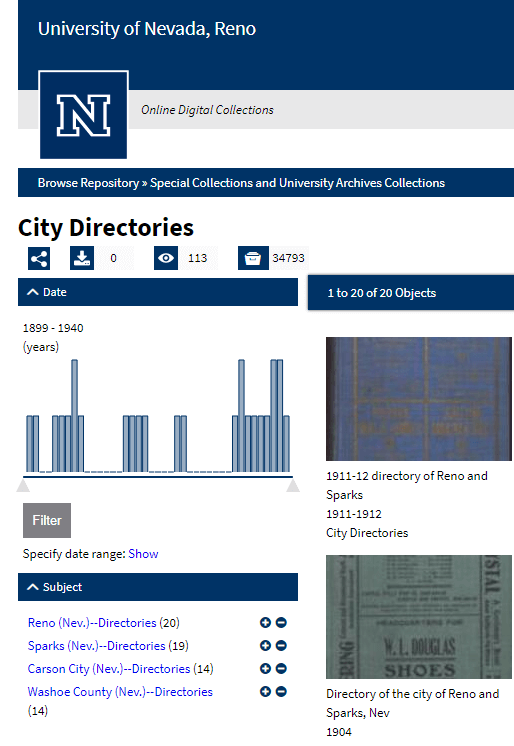
Nevada City Directories at the University of Nevada
Search the collection here.
FINDMYPAST
NEW: Canadian Directories & Almanacs
Findmypast has launched brand new collection with records from the province of Prince Edward Island. According to the company, more will be added from across Canada over the coming months.
About the collection:
“The eclectic mix of five directories cover the late 19th century from 1880 to 1899.”
The titles included are:
- Frederick’s Prince Edward Island Directory
- McMillian’s Agricultural and Nautical Almanac
- McMullan’s Almanac
- Teare’s Directory & Hand Book Of The Province of Prince Edward Island
- The Prince Edward Island Almanac
Search the collection here.
Updated: PERiodical Source Index (PERSI)
About the collection:
“Over 7,000 images have been added covering a variety of PERSI publications, perfect for fleshing out family stories. The new periodical titles that have been added are:
- Vermont Quarterly Gazetteer: A Historical Magazine / Bound With New Title: Vermont Historical Gazetteer
- Recherches Historiques
- Cambridge Historical Society Publications/proceedings
- Archivium Hibernicum / Irish Historical Records
- Queen City Heritage / Ohio Valley History
- Connecticut Historical Society Collections
Simply filter by periodical to get to the latest additions.”
Search the collection here.
by Lisa Cooke | Oct 4, 2019 | 01 What's New, Land Records |
Land records are some of the most underutilized, yet most useful, records available in genealogy. Often, they are the only records which state a direct relationship between family members. They can also be used to prove relationships indirectly by studying the land laws in force at the time. Sometimes they can even be used to locate an ancestor’s farm or original house, so that we can walk today where our family walked long ago.
Land records exist in the United States in abundance for most locations. Read on to learn how to find land records and how they can help you scale seemingly impossible brick walls in your genealogy research. Our guest blogger is Jaye Drummond, a researcher for Legacy Tree Genealogists.
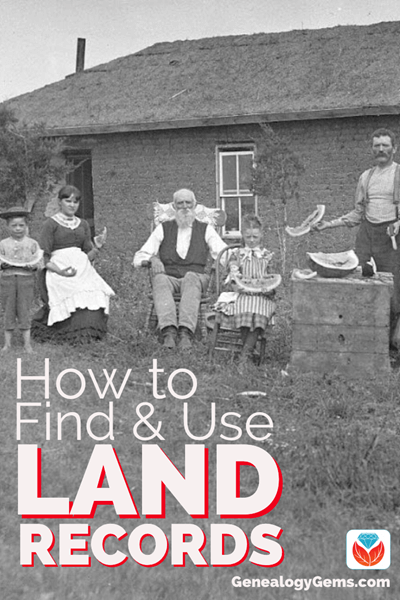
The History of Land Records
The search for new land is one of the main themes of American history, so it makes sense that land records would be an important part of researching that history.
The right to own real estate was not universal in most of the countries from which the majority of American immigrants came. And even when it was possible to own land legally, it was often too expensive and thus out of reach for most people.
As a result, the lure of vast expanses of relatively cheap and plentiful land has proved irresistible to millions of immigrants to American shores over the course of the past 400 years.
The land records created throughout those years to document ownership of all that real estate have accumulated in seemingly limitless amounts. Even in the face of catastrophic record loss in some locations, land records are generally plentiful. They usually exist from the date of formation of colonial, state, and county governments, where the records still exist.
Information Contained in Land Records
Due to the paramount importance of land ownership in what would become the United States, land records often are the only records in which you will find your ancestors mentioned in some areas.
And there’s good news! Land records often state relationships or provide other, indirect, evidence of family relationships. This makes them an invaluable resource for genealogists.
Understanding what kinds of land records exist, where to find them, and how to use them is often critical to solving genealogical mysteries.
4 Types of Land Records and How to Use Them
There are four different types of land records that can play a vital role in your family history research. Let’s take a closer look at what they are and how to use them.
1. Land Deeds
The most essential land record is the deed. Deeds document the transfer or sale of title, or ownership, of a piece of land or other property from one party to another.
Deeds usually concern land, or “real” property, but they also often mention moveable or “chattel” property, such as household goods and even enslaved persons.
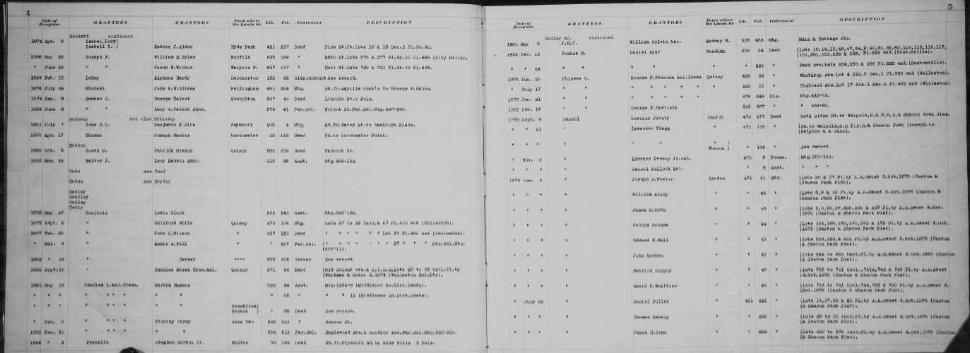
Example of deed index, courtesy of FamilySearch
They sometimes, but not always, contain explicit, direct statements of relationship between family members. Sometimes this can be a parent-child relationship, but deeds can also include a list of people who are children or heirs of a particular deceased person who owned the land being sold.
Sometimes the language in deeds involving heirs makes it clear that the heirs are children, sometimes not, so some care must be taken not to assume that all heirs are children. Research in other records sets such as probate, census, and church records may make the relationships of the heirs to the deceased land owner clearer.
In the early years of a settlement, and sometimes later, deeds books also often contained other types of transactions, including the sale of enslaved persons and sometimes even wills. These are often records for which no other copies survive. Thus, surviving deed books should always be checked for ancestors and their family members in every jurisdiction in which you do genealogy research.
Also, remember to check published abstracts of deeds if they exist, as witnesses to deeds were not included in most indexes to the original deed books. Witnessing a deed was one of many ways relatives assisted one another, and thus the presence of one of your ancestors as a witness for someone else suggests they had some kind of relationship, which might lead to the discovery of previously unknown ancestors.
Also keep in mind that not all states required the recording of deeds throughout their history, or did not require them to be recorded in a timely fashion.
Pennsylvania is an example of this lackadaisical attitude to record keeping that now seems foreign. When researching land records in Pennsylvania it is important to remember that deeds for an ancestor might have been recorded years, even decades, after the actual transaction took place. Therefore, always remember to check the indexes for deeds and other transactions many years after the person in question died or left the area.
In other states, such as New Jersey, land was sold at the colony and state level for longer than is typical in other areas and thus land records must be sought at the state or colony level up to that time.
In the case of New Jersey, deeds only began to be recorded in the various counties around 1785. Therefore, New Jersey real property research must be done at both the county and state or colonial level.
In the case of colonies and states with massive record loss, such as Virginia, land records recorded on the state level are often the only records that survive for some counties, and thus are critical for success in navigating such “burned” counties.
2. Land Grants and Patents
Land grants and patents issued by the various colonial, state and federal governments are also an important resource, including land lotteries in states like Georgia.
In many states, such as Pennsylvania and North Carolina, the original applications, warrants, surveys, and patents or grants still exist and can be searched at the state archives or online.
While these documents do not often state relationships, they sometimes do. That was the case with one of my ancestors whose father had applied for a land patent in Pennsylvania in 1787. He died before the patent was issued in 1800, and thus it was granted to his son by the same name. However, the land patent spelled out that the original applicant had died and his son was the person actually receiving the patent.
Land patents and grants, as well as deeds in general, can also document the dates in which an ancestor resided or at least owned land in a given location. This can assist the researcher in establishing timelines for ancestors. It can also help when it comes to differentiating between two or more individuals residing in a given area with the same name. Anyone dreading research on their Smith and Jones ancestors might just find the solution they seek in those old, musty deed books!
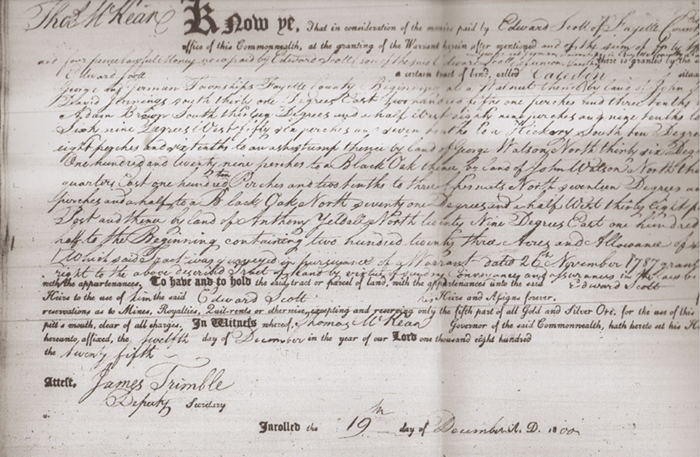
3. Mortgages
Other land records that might prove essential in solving genealogy puzzles are mortgages.
In some states like New Jersey, mortgages were recorded locally earlier than deeds and sometimes survive for earlier years than do deeds.
A mortgage is a promise by a borrower to repay a loan using real estate as collateral—in effect deeding title to the real estate to the creditor if the loan is not repaid.
A similar instrument called a deed of trust, or trust deed, performs the same function with the exception that a third-party trustee takes title if the loan is not paid back in full. In the early years, mortgages and trust deeds were usually contracted with private individuals, but as the banking industry grew in the United States over the course of the nineteenth century, they began to be taken out with banks instead of private persons.
The two parties involved in a mortgage are the “mortgagor” and the “mortgagee.” Indexes can often be found for mortgages using those terms.
However, sometimes early mortgages and trust deeds were recorded in the same books as deeds, so keep an eye out for them.
And remember: the mortgagor is the borrower, while the mortgagee is the creditor.
Don’t be put off by their sometimes-confusing terminology. Old mortgages and trust deeds are some of the most underused land records in existence—yet they can sometimes be the key that unlocks the door to that next ancestor. Don’t overlook them!
4. Tax Records
One other land record that could crack the case is land tax records. Everyone who owned land had to pay taxes on it, at least in theory. Sometimes, land tax books include notations about one person inheriting land from another, or more commonly, the change in owner’s name from one year to the next can indicate inheritance of the land. The absence of a deed or will showing the transfer might be explained by checking the land tax books.

“14th Dec. 1786 Received of Mr. James Brooks Six pounds, Eighteen Shillings and four pence in full for the balance of Samuel Wood Estate Land Tax for 1784 & Half tax for 85.” John Rodes L. Ds. Image courtesy of MyHeritage.
The Law of the Land: Primogeniture and Genealogy
In some cases, the inheritance and real estate laws of the time might allow you to make a determination of parentage even without a will or deed stating the suspected relationship.
The legal concept of primogeniture, or inheritance of land by the first-born son, was in force in many parts of the Thirteen Colonies until soon after independence, especially in the southern and middle colonies. Thus, when a land owner died, his first-born son would often inherit all or most of his land if he died intestate, or without a will.
The emergence of one man as the owner of a given piece of land in place of the previous owner, either as the seller, or “grantor,” in a deed or in the land tax records, could indicate that the previous owner died and the land was inherited by his “heir-at-law,” the first-born son. There might not be any record of this transfer, so knowing the “law of the land” can prove to be instrumental in cracking the case.
In these and many other ways, land records can be used to find direct and indirect evidence of family and other types of relationships, often when no other record does—or even survives. It is for this reason that land records research must be part of any reasonably exhaustive genealogical investigation.
Where to Find Land Records
In some areas, land records are the only records that survive which state relationships or can be used to provide indirect evidence of them.
They also are useful in establishing biographical timelines for ancestors, and to learn more about their lives. They can sometimes also be used to identify the location of ancestor’s farms and sometimes even their original homes, so that today’s genealogists can often literally walk in the footsteps of their ancestors. But where are those records now?
It used to be that if you wanted to do genealogy the right way, one of your first stops had to be at the county courthouse where your ancestors lived. This is still a good practice, as many treasures held within the walls of the hundreds of courthouses scattered across this land are not microfilmed, digitized, or abstracted, and likely never will be.
The Recorder of Deeds and the County Clerk are therefore often the genealogist’s best friends. So, planning a trip to the courthouse or archive where land records are held is still a good idea.
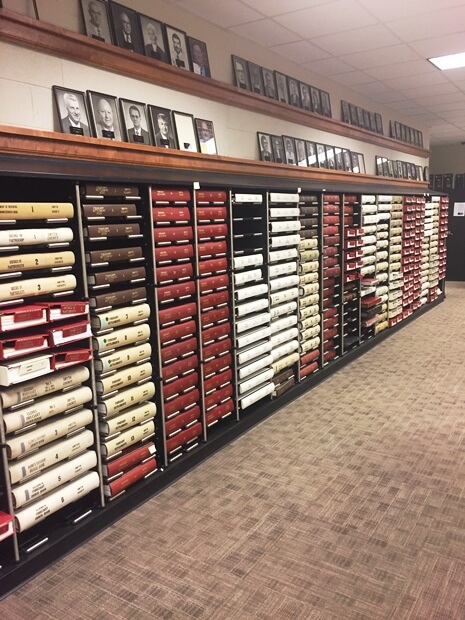
Smyth County, VA courthouse records (Image credit: Margaret Linford.)
But many of us live far away from where our ancestors owned land and lived out their lives. How can we access these records if we don’t have the time or budget to travel to the areas in question?
Thankfully, the digital revolution has made researching land records and other types of documents much easier, but often still time consuming and at times overwhelming.
The land records held at the state level for “state land” states (the original thirteen colonies and the states formed from them such as Maine and Kentucky) are usually indexed. They can often be accessed digitally at the website for the state archives, commercial genealogy sites such as Ancestry.com, or can be ordered via correspondence with the archive.
In states that were part of the old Northwest Territory, such as Ohio and Indiana, as well as the other public land states (any state formed under the Constitution that was not carved out of one of the original colonies), grants from the federal government to the first recorded owner of that land can be found at the Government Land Office site created by the Bureau of Land Management. Their website (available here) allows searches for names of individuals who purchased federal land in public land states. You can even view the digital images of the land grants, including the signature of the President of the United States at the time.

Example of a land patent image.
Other types of records associated with federal land, include:
- applications for public domain land grants,
- Homestead Act applications,
- Freedman’s Bureau land records,
- and bounty land warrants and applications for veterans.
These are all held at the National Archives in Washington, D.C. Many of these records also state relationships and add rich detail about the lives of ancestors. However, most of these records have never been digitized and must be searched in person or requested via the National Archives’ online order service.
(Editor’s note: Learn more about land records at the National Archives here.)
Land records at the county or town level are still held at the local county courthouse or archive, if they survive. Many jurisdictions have digitized their land records and made them available online, in many cases for free. This can sometimes include the entire run of a county’s land records, back to the formation of the county. County clerks and recorders will also sometimes do research via correspondence, though most are unable to do so due to time constraints.
Land Records at FamilySearch
Most importantly in the field of land records research from a genealogical perspective is the massive digitization project undertaken by FamilySearch, the website for the genealogical Society of Utah.
Millions of land records from all across the United States, and even some from other countries, are available at their website free of charge—and viewable either from the comfort of your own home or at a Family History Center or the Family History Library itself, depending on the license agreement FamilySearch has with the original repository.
This vast trove of land records is almost completely unindexed by FamilySearch and will thus not appear in results using their “Records” search page. They must instead be searched in the “Catalog” search page. (Editor’s note: learn how to search unindexed records at FamilySearch by reading our article: Browse-Only Databases at FamilySearch are Easy to Use.)
Despite not being indexed by FamilySearch, the digitized microfilms themselves usually have indexes, either in separate volumes or at the beginnings or ends of the digitized individual deed books.
Most of the digitized land records made available by FamilySearch date from 1900 or before, so a trip to the courthouse might still be warranted for most twentieth-century deeds and more recent land records research. If all else fails, don’t forget to ask the recorder or clerk for help if you have a limited research goal, such as one deed copy—you just might be surprised how eager and willing they are to help.
If the land records you need are unavailable online or are held in a remote location, consider hiring a professional genealogist to go to the courthouse in person on your behalf. Legacy Tree Genealogists has a worldwide network of onsite researchers who can obtain nearly any record that still exists in most areas. Learn more here about how we can assist you in the search for your ancestors and the records of their sometimes only tangible piece of the American dream—land!
(Editor’s note: Our links to Legacy Tree Genealogists are affiliate links and we’ll be compensated – at no cost to you – if you use it when you visit their website. This page includes a discount code for full service projects, or scroll to the bottom of the page for information about their 45-minute genealogy consultations. Thank you for helping to keep our articles and the Genealogy Gems Podcast free. )
Indeed, land ownership was more widespread in the Thirteen Colonies and the United States than most any other nation on earth. So the good news is that there’s a good chance that some of your ancestors were land owners. However you access them, land records are absolutely critical for success in genealogy and should be thoroughly examined whenever possible. You’ll be glad you did.
Jaye Drummond is a researcher for Legacy Tree Genealogists, a worldwide genealogy research firm with extensive expertise in breaking through genealogy brick walls. To learn more about Legacy Tree services and its research team, visit their website here.
 Did you find anything worth sharing here? Please do! We love getting the word out about new genealogy records online.
Did you find anything worth sharing here? Please do! We love getting the word out about new genealogy records online.









